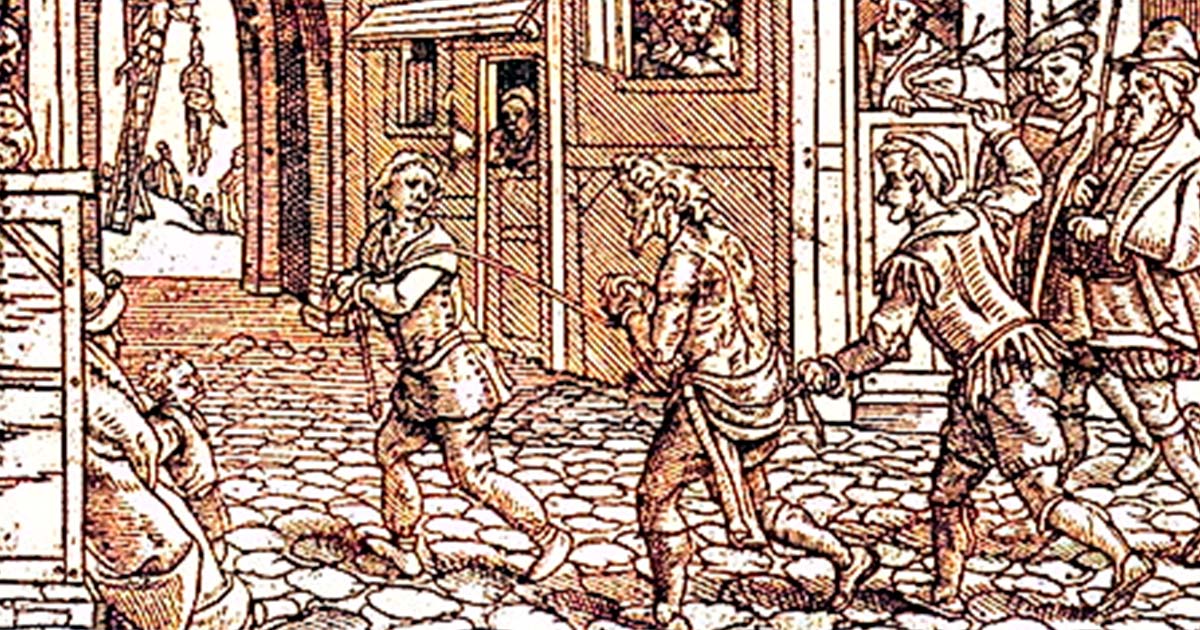Unemployment Under Edward VI Was Punished with Branding and Slavery
In the annals of history, peculiar laws are often found, shedding light on the societal norms and governance of bygone eras. One such oddity is the Vagrancy Act of 1547, a draconian decree that sent shockwaves through the populace of Tudor England. This law, implemented during the reign of King Edward VI, imposed harsh punishment on those unfortunate enough to be unemployed.
Branded and Sold: Unemployment's Grim Consequence
By the 1540s, England was facing widespread unemployment - while population was on the rise, employment opportunities were not. The combination of bad harvests, inflation and social changes, including the practices of ‘engrossing’ (amalgamating farms) and ‘enclosure’ (fencing off land), exacerbated poverty and homelessness, while the dissolution of monasteries under Henry VIII removed the only system of poor relief available at the time. Escalating vagrancy and crime fueled the ruling classes' fear of impending social unrest.
The result was the introduction of the Vagrancy Act of 1547, a.k.a. the Vagabonds Act, which aimed to tackle the issue head on. It dictated that any able-bodied person who found themselves unemployed for more than three days and who refused work faced a dire fate; they could be branded with a “V” and held in slavery for two years. During this time, they were to be fed only bread and water. Any attempts to escape were met with harsh punishment.
The plight of vagabond children was even more alarming, for without parental consent, anyone could claim ownership over a vagabond child and work them as an “apprentice” until 24 for men, and 20 for women. Attempting to reclaim their children could result in the enslavement of their parents.
- From Sumerian Gods to Modern Day: The Long History of Slavery and Lost Children
- 9 Methods of Ancient Punishment That’ll Make You Squirm

In the painting “Edward VI and the Pope: An Allegory of the Reformation,” Edward can be seen at the time of his succession alongside his uncle and Lord Protector, Edward Seymour, who would have been responsible for the Vagrancy Act of 1547. (Public domain)
Was Edward VI's Approach to Unemployment Truly Tyrannical?
The Vagrancy Act was an extreme measure to coerce citizens into productive employment. While it’s been linked to the rule of Edward VI, it’s important to note that he was only nine when he ascended to the English throne in 1547. It was actually his Lord Protector, Edward Seymour, and the Privy Council who were in charge.
Nevertheless, these kinds of measures were nothing new. The 1494 Vagabonds and Beggars Act dictated that “vagabonds, idle and suspected persons shall be set in the stocks for three days and three nights… and then shall be put out of Town.” The later 1531 Vagabonds Act replaced stocks with whipping, while the 1536 Act for Punishment of Sturdy Vagabonds and Beggars forced vagabonds into work after their punishment.
The Vagrancy Act is a chilling reminder of the extremes to which authorities would go to maintain social order. It was, nevertheless, very unpopular and was repealed just three years later, with a lack of evidence to prove that it was actually enforced in Tudor England.
Top image: Woodcut depicting a vagrant being punished in the streets of Tudor England. Source: Public domain


















Comments
"The Vagrancy Act was an extreme measure to coerce citizens into productive employment."
Modern feudalism uses coercion into tax-paying employment as serfs of the state. Whether the work is truly productive is less relevant. Equally, though, it also has measures to discourage employment. These, however, are aimed at different sections of the community and the latter of the two approaches is disguised by programs to encourage employment, so few notice the underlying greater program of active discouragement. The purpose of these approaches is division for conquest. What worked for Caesar is still working today.
This is the state of state and market control in the very unfree West. It has similarities to Medieval England, particularly in relation to peasants' revolting whereby revolt fermented slowly and disappated quickly. A prick to the emotional balloon and it's all over.
That's because mass revolt runs out of gas very easily and is easily hijacked by traitors in the ranks. Those revolts that were successful were never mass entities, but elite-driven ones. The best candidate for the argument against that would probably be the American Revolution, yet even it is seriously questionable given the number of American Freemasons involved.
In short, masses are ruled by elites because timidity is the default setting of the former and tyranny is often the default setting of the latter. As such, governments have much in common with Mafia protection rackets, except with less protection.